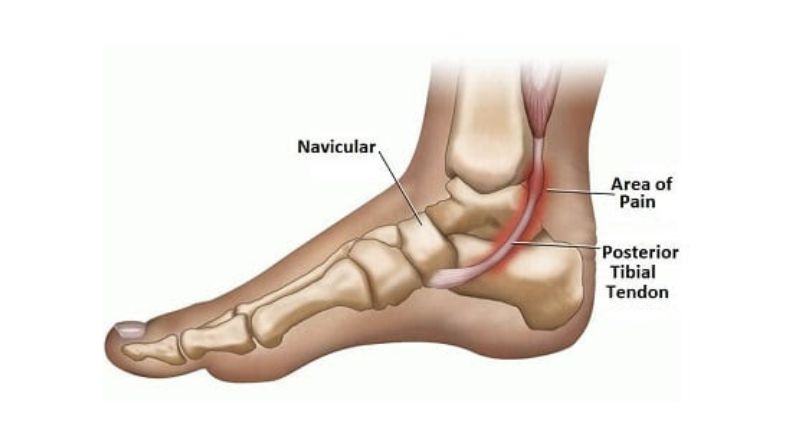Tibialis Posterior Tendinopathy is a condition that often manifests as pain on the inner side of your arch or ankle. If left untreated, trust us, it won’t go away by itself. Quite the contrary, it can gradually worsen, becoming increasingly challenging to manage or treat.
Seek Professional Advice Early
The key to managing Tibialis Posterior Tendinopathy effectively and minimizing its impact on your daily life is obtaining early professional advice. If you are experiencing symptoms linked to this condition, book an appointment with your podiatrist ASAP.

Treatment Approach – Offloading
Like many health conditions, treating Tibialis Posterior Tendinopathy typically involves various steps or combinations of interventions. Crucial among these is offloading the tendon. However, this doesn’t mean you should stop all activities and rest entirely—this approach can have adverse effects on a tendon. What’s required instead is giving the affected tendon the right kind of support.
Orthoses
At AC Podiatry, we believe in using orthoses judiciously and not as a be-all, end-all solution. In the case of Tibialis Posterior Tendinopathy though, using orthoses is almost always an important early intervention measure, accompanied by strengthening which we will discuss later. By walking daily, the tendon undergoes significant strain; continuously undertaking this strain without rest can cause extensive damage over time, potentially requiring surgical intervention.
While orthoses are being prepared, temporary taping can be used, but it isn’t a long-term solution due to potential skin irritation and reduced support over time.
Orthoses serve as a “load management tool” that supports the healing process and the strengthening of the affected area. Depending on your individual progress, your podiatrist can guide you to progressively wean off the orthoses, or you may continue using them only for certain activities.
Right Shoes for Support
Considering the essential role orthoses play in treatment, selecting the right footwear which supports both your feet and the orthoses becomes critical. Be sure to consult with your podiatrist before purchasing new shoes to ensure they have the right supportive features.
Load Management
This involves making temporary changes to your activities which might include cutting back or altering your running routine temporarily and then gradually rebuilding. We also advise avoiding uneven terrain. Remember, this doesn’t mean you should quit exercising. Your podiatrist can help identify suitable substitutes to maintain your physical fitness.
Strengthening
Building strength in the affected area is crucial, and possibly the most important part of your treatment plan. Without it, you may not reach a complete resolution and may experience relapses of pain or become heavily reliant on your orthoses.
Your podiatrist can provide exercises following evidence-based tendon loading protocols that target the affected tendon. Additional exercises might be needed to strengthen neighboring weak muscles that support the advancement of the Tibialis Posterior tendon.
Release
During your treatment journey, your podiatrist may also employ hands-on treatment techniques like massages or dry needling to release tight muscles adjusting in the area under strain. Foot mobilization can be used to enhance ankle joint motion range, function and to reduce the strain on the affected tendon.
Say No To Chronic Tibialis Posterior Tendinopathy
At AC Podiatry, our approach relies on providing evidence-based treatment options customized to your specific needs. We are committed to guiding you on the optimal combination of treatments to address your condition. Don’t let Tibialis Posterior Tendinopathy become a chronic issue. Book your appointment with us today, and confidently take control of your recovery journey.

